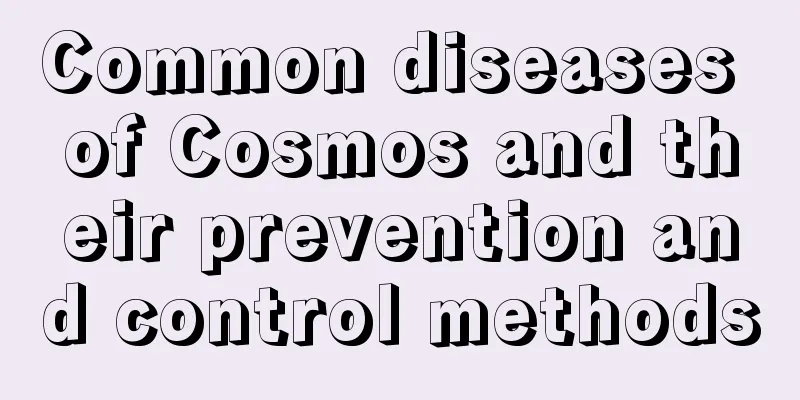Common diseases of Cosmos and their prevention and control methods

Common diseases of Cosmos: leaf spotSymptomsThere are oval and long light reddish-brown spots on the leaves, surrounded by chlorotic circles, which later expand into large irregular patches with black spots on them. Prevention and treatment methodsRemove diseased leaves and spray pesticides in time. It can be sprayed with 500 times diluted 50% thiophanate wettable powder. Common diseases of cosmos: powdery mildewSymptomsThe diseased parts are leaves, young stems, flower buds and flower buds, etc. The obvious feature is the presence of a grayish-white powdery mold layer (conidia and mycelium of the pathogen) on the diseased area. The growth and development of the affected plants are stunted, the leaves are twisted, and they cannot bloom or the flowers become deformed. When the disease is severe, the leaves dry up and the plant dies. Pathogen analysisThe pathogen of powdery mildew is Erysiphe graminis, which belongs to the subphylum Ascomycota. Mycelium grows on both sides of the leaves, conidia are columnar, ascocarps are aggregated or nearly aggregated, dark brown, oblate, accessory filaments are unbranched or irregularly branched, curved, asci are long or short ovate, and ascospores are oval or elliptical. Prevention and treatment methodsApply more phosphorus and potassium fertilizers appropriately, and pay attention to ventilation and light transmission. Prune off seriously diseased plants or seriously diseased parts promptly, bury them deeply or burn them to eliminate the source of bacteria. If necessary, spray 1500 times diluted 15% triadimefon wettable powder at the early stage of the disease. Common diseases of Cosmos: Botrytis cinereaSymptomsThe seedlings infected with gray mold are light in color, and the leaves and petioles are grayish white and water-soaked. The tissues soften and rot, and gray mold grows on the surface when the humidity is high. Young stems often initially develop irregular water-soaked spots at the base of the petiole, which quickly become soft and rotten, and then shrink or break. Finally, the diseased seedlings rot, wither and die. Prevention and treatment methodsManually remove diseased leaves or apply pesticides. The agent can be sprayed with 1000 times diluted 70% methyl thiophanate wettable powder. |
<<: Common diseases and pests of tea and their control methods
>>: Common diseases of Jianlan and their prevention and treatment methods
Recommend
What medicinal herbs can be planted in autumn? What are the precious medicinal herbs in autumn?
There are about 200 kinds of Chinese medicinal ma...
What is the best month to plant sweet potatoes?
When to plant sweet potato flowers Sweet potato f...
The difference between rose and rose
1. Different leaves The leaves of roses are not v...
How many times a year are Qiaotou sweet potatoes harvested?
Qiaotou sweet potato is a famous specialty of Qia...
What to do if the water-cultured lucky bamboo does not take root
Hydroponic lucky bamboo needs treatment When grow...
Planting conditions of Phoebe nanmu
1. Soil suitability When planting golden nanmu, y...
Plants that easily outgrow their pots, maybe you have one at home
Sunflower Portulacaceae Portulaca Key points for ...
Breeding methods and precautions for small blue clothes
1. Maintenance methods 1. Soil: The soil for grow...
When is the best time to control the growth of peanuts (how high can peanuts grow to increase yields by controlling their growth)
Zheshan in Anqiu, Shandong is known as the hometo...
This super fertilizer is only available in rural areas. Flowers will grow rapidly after eating it, and it doesn’t cost a penny!
Use ash from the bottom of the pot to grow flower...
Can cactus protect against radiation?
1. Is it possible to prevent radiation? Cactus ca...
What are green vegetables
1. Lettuce The leaves of lettuce are long lanceol...
How to grow fairy feather philodendron
1. Humidity Fairy Feather Philodendron has very h...
How to grow azalea in summer
1. Lighting It must be shaded when caring for it ...
How to grow succulents
1. Prepare the soil When planting succulents, you...









